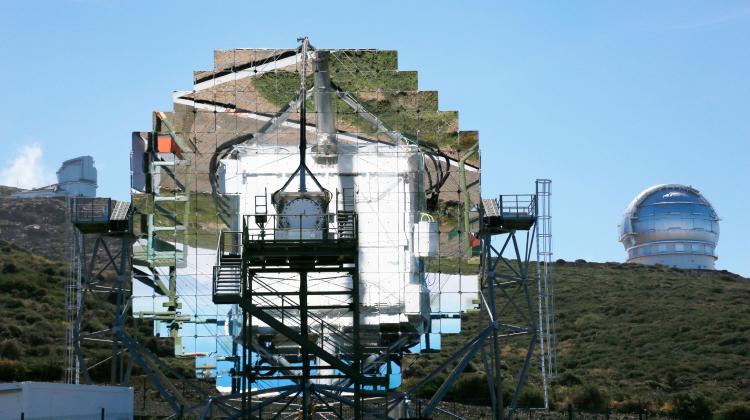National Centre for Nuclear Research in the international gamma ray burst project
 Photo: Fotolia
Photo: Fotolia
The National Centre for Nuclear Research will participate in the international project POLAR-2, which will allow to better understand study gamma-ray bursts - evidence of the strongest explosions in the Universe. The tasks of Polish scientists will include preparing electronic systems, the National Centre for Nuclear Research informs.
The POLAR-2 experiment: Gamma-Ray Burst Polarimetry on the China Space Station is one of the nine experiment that will be on board the China Space Station as part of the cooperation between China and the UN. Their list was announced on June 12 in Vienna. Researchers expect that the new equipment will begin to collect data in 2024, the National Centre for Nuclear Research reports in a press release.
In addition to NCBJ, the POLAR-2 consortium members include: the University of Geneva, the Max Planck Institute for Extraterrestial Physics and the Institute of High-Energy Physics of the Chinese Academy of Sciences.
Scientists and engineers from the National Centre for Nuclear Research participated in the first POLAR experiment: they prepared electronic systems, prototyped plastic scintillation detectors and analysed collected data. "For the POLAR-2 experiment, we want to design and build electronic systems that will receive data directly from the detector" - announces Dominik Rybka from the Department of Electronics and Detection Systems of the National Centre for Nuclear Research, co-developer of electronics used in 2016, quoted in the release.
"We will equip our systems with appropriate, proprietary software. We also intend to design, build and program electronics that will prepare signals received from the detectors for sending to Earth. Our next task is to build a special low voltage power supply that will power the entire instrument"- the expert adds.
Polish scientists will also be involved in the analysis of data collected by the detector.
Strong bursts of gamma radiation in the sky have been observed by researchers for over 50 years - through detectors placed on satellites. The origin of these bursts remained a mystery for years. Currently, scientists associate them with the two most energetic types of explosions in the Universe: collisions of neutron stars and collisions of a neutron star and a black hole, and hypernova explosions that end the lives of the most massive stars.
"We know that enormous energy is released during these phenomena, but we still do not quite understand the processes that lead to the emission of the most energetic part of the radiation they generate" - says Prof. Agnieszka Pollo, head of the Department of Astrophysics of the National Centre for Nuclear Research, quoted in the release. Researchers believe that the magnetic field of the system that is the source of the burst plays an important role. Therefore, to investigate this hypothesis, they will collect as much information as possible about the polarization of the burst of gamma radiation.
However, due to the fact that cosmic gamma rays are absorbed by the atmosphere and do not reach the Earth`s surface, observations of gamma-ray bursts and their polarization have to be carried out, for example, on a space station.
"The first POLAR mission that we co-organized, carried out in 2016 on board the Chinese space laboratory Tiangong-2, observed 55 bursts, in the case of five of which we were able to measure polarization. We hope that POLAR-2 will provide much more detailed information" - adds Prof. Pollo.
PAP - Science in Poland
szz/ agt/ kap/
tr. RL
Przed dodaniem komentarza prosimy o zapoznanie z Regulaminem forum serwisu Nauka w Polsce.

















